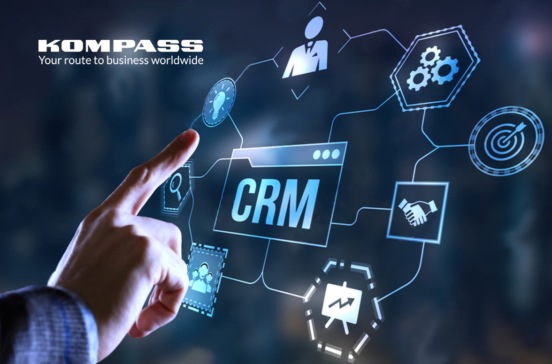10 October 2022
Striving to boost their sales, companies are increasingly using online prospecting, hunting for new customers and adding data about them to their database.
However, businesses do not always use it up to 100%. Meanwhile, any customer database, no matter if it is in CRM or Excel, is an excellent (and inexpensive) tool to increase sales and profits.
The source of profit can be generated not only by new prospects and customers. Additional sales and ideas for new lines of business can be boosted from your existing customer database, which must be regularly updated and enriched.
Customer database management
Customers are the main asset of any business. They bring you revenue. For any reputable company, it is obvious that own customer database needs to be collected and kept updated. But just having a customer database is not enough. It must be constantly dealt with – the data must be structured and up to date. Otherwise, as soon as the database becomes outdated, you start wasting precious time, and that means loss of productivity and increased expenses in general.
Many convenient and functional database management services have now been developed. It all depends on the solutions you choose – it could be a database segmentation and enrichment service with smart alerts and business signals, or data processing and integration services.
Why do you need an updated database of customers and prospects?
Reduced time spent on lead generation and finding new customers. A quality prospect database means that sales teams won’t waste time looking for the ‘right’ leads. Having a structured and regularly updated database means being able to assess the potential of new prospects in no time and to successfully reach them.
Creating a customer-centric business. One of the tasks of a customer database is to keep a history of the relationship with the customer. You know how long you have been working with him, his share in the sales volume, what actions and under what time schedule should be taken… This allows you to work with the client individually.
Competent marketing and discount policy. Knowing the history of the relationship with the client, you can create a personalized marketing offer or provide a discount on special terms. Improve campaign effectiveness – inaccurate data can result in the proposed message not reaching the targeted recipient, although you will still incur the cost of delivery.
Storing customer contacts. Research has proven that it is seven times easier to sell to a customer who has already bought something from you than to a new prospect.
Let’s consider the main features of correct database management:
- The value of the database is determined by the convenience of working with it and the speed of customer identification. If your database is not updated and enriched, it becomes harder and harder to target new decision makers and to generate new sales.
- The database must be structured, so that the managers could quickly find information about the necessary client. Its management should be subject to common standards, especially if it is edited by several persons. The access to the database must be shared, so that a change of managers does not influence quality of relationship with a client.
- Any actions with the data require time. An average sales manager needs 2,5 hours per day to find the right contact data and decision makers to prospect instead of using that precious time to do what they do better – to sell. How to avoid it? Organise a new prospect data generation process.
- Management of the database should be continuous. It is a must to regularly update all the information about the existing clients and add all the new ones without exception.
Ideally, the client database should allow you to track costs per client. For example, how many contacts were made, how many meetings were held, which discounts were provided, etc. Preferably, the database should display the sales funnel for each client. Knowing your tangible benefit from each customer will allow you to assess their significance to you, as well as identify them in the customer classification you use. In addition, data that can be measured is a source of a lot of important information to improve your client relation processes and launch new projects.
Let’s look at several effective ways to monetize your database that can be successfully applied in practice.
1. Base segmentation and customer penetration index
The method is more relevant for B2B companies.
Without segmentation it makes no sense to work further with any database. With an online prospecting tool like EasyBusiness, you can always segment your potential customers by specific criteria: industry, number of employees, imports or exports, annual turnover, and so on. This allows you not only to organize your database, but also to get valuable data for use in sales.
That said, segmentation is only a good starting point for further data processing. Once it’s done, you need to analyze the needs of customers in each segment in greater depth. In most cases, this allows you to sell additional products or services.
In marketing, this technique is called customer penetration.
For example, your company supplies composite materials. Segmentation of the database highlights a group of companies related to the cable industry. Then you can analyze how each company’s financial turnover grows. If the company’s turnover has been increasing for several years – this means that the need to purchase composites is also increasing. Thus, the level of penetration in such a company can be increased.
There are many ways to penetrate: invite customers from the segmented database to an event or webinar, where you can present all your benefits; demonstrate success cases; create a special product catalog or offer, etc.
For proper segmentation and data processing, meaning the subsequent analysis of penetration opportunities you can use our data integration services.
2. Email campaigns
You can get more orders from your customer database by launching an email campaign. This method is recommended for B2B companies, although it is universal when used correctly.
Businesses in B2C use active email campaigns quite often: informing about new discounts and promotions, sending best wishes on holidays, even trying to generate entertaining or informative content.
Email campaigns not only allow you to get a stream of new prospects and contribute to lead generation – they are also an excellent tool for cleaning and updating your database.
So, you by all means can make money on your existing customer database if it is created, managed and regularly updated in-house.
The requirements for the management of a winning database are quite definite:
- Using modern online prospecting tools for creation and updating.
- Segmentation and structuring.
- Completeness, richness and diversity of information.
- Ease of use and prompt identification of clients.
- Ability to perform business analysis of data and determine a penetration index.
- Continuous data management: updating, cleaning, adding, enrichment.
- System of notes, notifications and smart alerts for each of the clients to keep the database live.
- Data export according to your own criteria and easy integration into CRM systems.
- Shared access for colleagues of the manager who is responsible for the database management.
Let us help you right now in the creation, processing and updating of the database of your prospects – contact us for a free consultation.












Comentarios
No Comments